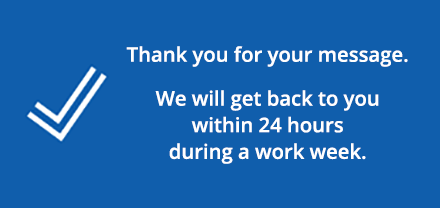Metrixlab thought leadership
Understanding differences in “wear-out” and “saturation”
Introduction
Many advertisers are concerned about “copy wear-out” when reusing advertising copy across multiple campaigns rather than generating a new ad for each one. This POV seeks to explain why this may not be as big an issue as brand marketers may fear.
It will explore how exposure saturation in a given period is often confused with the issue of “true wear-out.”
These two communications phenomena are related but different
i. Exposure saturation refers to delivering high exposure frequency over a defined period. This drives diminishing returns in that period, which means that additional exposures in or close to that timeframe will add little further impact on Brand and Marketing KPIs.
ii. True wear-out in copy effectiveness happens when a piece of communication simply ceases to be relevant and fails to resonate with the target audience any longer – independent of the weight of the advertising. Any level of exposure to this communication has little or no impact on KPIs.
There is a strong argument that due to misunderstanding these two issues, many brands change and renew their creative more often than is necessary or optimal.
Given how little attention consumers are willing to devote to advertising across media and platforms, it has become clear that consistency of messaging, ease of understanding, and familiarity help ads work well. Therefore, using the same copy over repeat campaigns may often work better than reinventing the brand/message each time. This, of course, only holds true if the existing ad copy has not suffered from true wear-out…
This is not an argument against developing new creative ideas. All ads will eventually fall prey to true wear-out, simply because they will begin to seem outdated and stale. But before reinventing the wheel, you might find that refreshing an existing idea can help extend its life. In other words, we may not need to change things up quite as much or as often as we think.
Exposure Saturation & Diminishing Returns
There is a limit to the impact advertising can have in a given period. There will be a point where further exposure to advertising can deliver no greater impact than that which prior exposures in that timeframe have achieved.
Once that limit is reached, there is no added benefit to giving people further exposure to the ad copy at that time.
However, the influence of ad exposures decays over time. Therefore, while extra exposures to that copy today may have little impact on the brand’s performance, further exposure to that same message may indeed leave an impact if it happens later. This potentially allows brands to effectively and efficiently extend their campaigns to cover longer timeframes.
This is easiest to grasp when illustrated with an example:
- If we deliver 1 or 2 exposures to a TV ad to consumers in a week, it will likely have some impact.
- If we deliver 10 exposures to the same ad in a week, it will likely have even more impact.
- However, it is unlikely that 10 exposures result in 10x the impact of 1 exposure – realistically, this is more likely to have 4-6x the effect of a single exposure. This is because with each further exposure, there is less scope to further influence that consumer, as they have already seen the copy several times.
- If we deliver 20 exposures to the ad in a week, it is highly unlikely that the 16th-20th exposures will add any significant impact on top of the first 15 exposures.
- This is because all the influence the ad can have in one week will have already been delivered by that point.
- If, instead, we deliver 2 exposures a week of that same ad, for 10 weeks, it is likely that even the 19th or 20th exposures, delivered in week 10, will still have an impact.
- This is because the impact and influence of ad exposure decays over time.
- In this case, the influence of the first few exposures over weeks 1-4 will likely decrease by the time the 19th & 20th exposures happen.
- This time, there is scope for the additional exposures to remind people of the message and rebuild the influence that copy has on consumers.
- Furthermore, if instead we deliver 10 exposures over 2-3 weeks, then break for 2 months before running another 10 exposures over 2-3 more weeks, the 2nd burst will likely deliver similar impact to the 1st.
- Here, many of the effects of the earlier exposures will have decayed by the time the 2nd burst airs, leaving room to regenerate response.
If you only looked at cases ii. & iii., you might think that the ad copy has “worn out” and it has stopped working. However, cases iv. & v. illustrate that this is not really the case. The truth is that there is a limit to the number of productive exposures to any ad copy that a brand can deliver in a given timeframe. If we deliver more than that in this period, the additional exposures do not add further impact. Additional exposures in another period, however, are another story. To summarize, the apparent “wear-out” effect is temporary.
It is caused by the sheer weight of the media applied behind the ad copy. The copy content hasn’t actually “worn out.” It has just been overused in that period. Even if we were to swap out the ad copy for a new one at that time, the second one may also underperform. This is because the consumer’s brand awareness, attachment, and consideration as well as their purchasing patterns and usage of the brand have already been heavily stimulated. Even a new message may struggle to add impact, then. Therefore, this pattern of performance is not related to copy “wear out,” but rather to oversaturating consumers with advertising exposure in a defined period.
True wear-out of ad copy
Despite the above, there are situations where copy simply does stop performing, irrespective of media weight. In such cases, the message no longer stimulates, or resonates with, consumers.
This, however, is a rarer phenomenon in brand ads than people often think. Many ads have remained relevant in the long term, sparking emotional, attitudinal, and behavioural responses in consumers over an extended period.
That said, some messages are more susceptible to true wear-out – their performance would likely decline if they were reused.
The types of advertising that are more vulnerable to true wear-out include:
- Ad copy built around specific events: if a brand has a World Cup campaign, for example, it is unlikely that the campaign will continue to resonate once the World Cup is over and done. Unless perhaps it’s in the winner’s country.
- Time-delineated offers: “Half price until 20th July” is unlikely to have much impact on 20th August.
- New news claims: campaigns announcing the launch of new products, new variants, and the like are not as compelling once the novelty wears off.
- Seasonal messaging: A Christmas ad is not likely to hit the mark in June. However, that is not a reason for brands to refrain from using the same Christmas ad over multiple years – Christmas trucks, anyone?
- Celebrity/influencer endorsement: their impact may decline if the celebrity or influencer involved loses fame or popularity for whatever reason. Though, there are some very successful long-lived examples too.
Ultimately, all ads are likely to suffer from true wear out, simply because like most things, they eventually lose their shine. That’s when it’s really time to head back to the drawing board.









